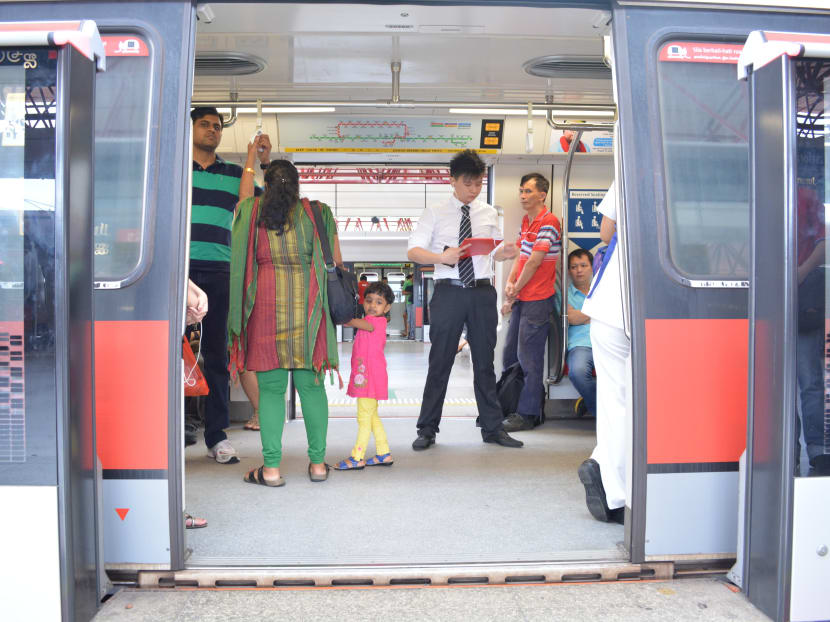Behaviour of other commuters key to enjoyable travel experience
SINGAPORE — How can MRT trains be designed so that problems such as crowding at the train doors are resolved and commuters stay happy?
SINGAPORE — How can MRT trains be designed so that problems such as crowding at the train doors are resolved and commuters stay happy?
A football-themed cabin complete with a penalty box drawn on the floor near train doors, soccer balls tied to the ceiling and an astroturf mat in the centre of the carriage were what Mrs Audrey Ow and her team at the Transport Experience Lab at the Land Transport Authority (LTA) came up with.
The initiative, carried out last year, was based on studies which found that when it comes to improving commuters’ experience on trains, whether a stranger gives up their seat to someone who needs it more has more impact on a commuter’s mood than infrastructural factors such as layouts and signs. 43 per cent of respondents said they were affected by other commuters’ behaviour, 29 per cent by personal comfort and space, and 28 per cent by infrastructure and the environment.
The themed MRT cabin, which will make a return in October, is part of the LTA’s efforts to approaching transport issues from a user’s perspective.
Mrs Ow, who was one of the speakers at the second day of the Ministry of National Development’s (MND) Urban Sustainability R&D Congress today (July 10), said researchers realised that Singaporeans wish for greater human connection. “We basically realised that we needed a paradigm shift that goes beyond just infrastructural or policy-type service … that would affect the commuters,” she said.
In resolving a train service disruption, for example, the approach should go beyond infrastructural solutions. “What if we were to rethink the issue from another angle? For instance, the experiential angle, when a service disruption unintentionally happens ... How do we help people cope with that anxiety when such disruptions unintentionally happen?” said Mrs Ow.
The football-themed cabin, implemented for two days during the World Cup period last year, experienced some success: Of those who rode in the cabins, 302 commuters said it made them smile, while 193 said they would move into the centre of the cabin to stand on the grass.
Not all nudges worked. For example, those who did not understand the football reference to penalty boxes would not know to stand away from train doors. But Mrs Ow said the experiment proved that design can encourage greater interaction between people and the environment — so much so that the Transport Experience Lab will work with the Central Singapore Community Development Council on a Purple Parade train in October to celebrate inclusivity and people with special needs.







